The bi-annual Big Sandy Machine Gun Shoot, this year held on March 25-27, 2010, celebrated the 80th birthday of one of the crown jewels in machine gun information and knowledge: Robert W. “Bob” Faris. Bob has spent his life working with firearms and has amassed a knowledge base that is almost incomprehensible. His collection of weapons and his enormous library of manuals, reports, tests and photographs is a reference source that is almost unequaled anywhere in the world.
Born in 1930, and raised on a family farm outside Perkasie, Pennsylvania, Bob’s interest in guns began as far back as he can remember. Collecting and repairing .22s as a child, by the time World War II ended in 1945, at the age of 15, he had accumulated several functional .22 caliber rifles as well as a few old military rifles.
Although Bob had great mechanical ability, he had little aptitude for mathematics, which put a damper on a hoped-for career in engineering. In 1949 he attended a two-year junior college course in gunsmithing in Trinidad, Colorado that was mainly oriented towards commercial gun repair and custom work. P.O. Ackley was the chief instructor and Bob learned a lot about small arms principles that served him well in later years.
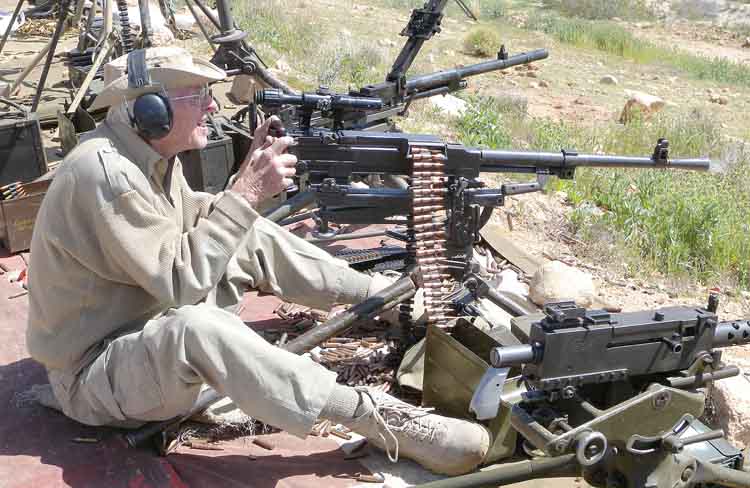
In the summer of 1950 when the Korean War broke out, Bob was working in a machine shop in Perkasie to help pay for his schooling. He was a member of the Pennsylvania National Guard, which altered his draft status. He went back to Trinidad State Junior College (TSJC) determined to finish his two-year course resolving to try and become an armorer or small arms repairman when his time came for Army service and then find a career in the military research and development field. During his second year at TSJC, he learned of an opening for a civilian “gunner” at Aberdeen Proving Ground, Maryland. Prior to graduation he applied for, and got, the job that consisted of setting up and firing standard and experimental U.S. and foreign automatic weapons, testing barrels for ammunition, proof acceptance of gun barrels and weapon systems.
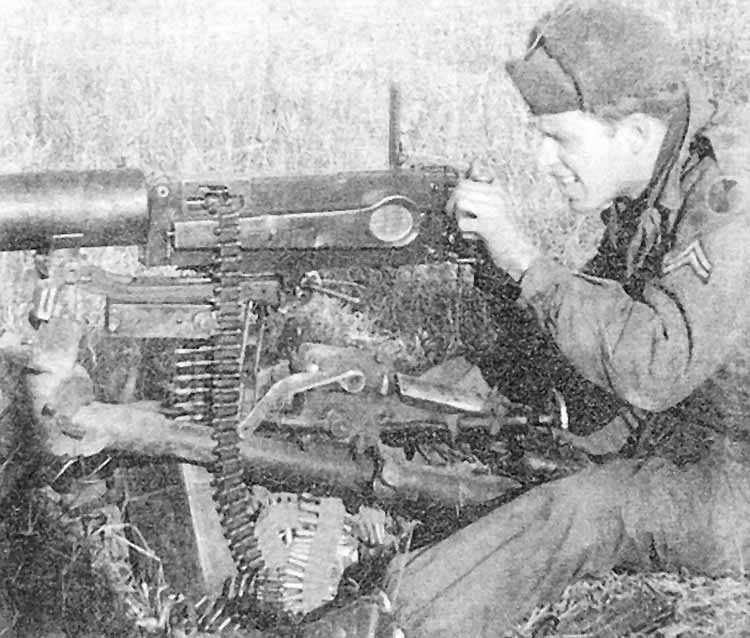
Nine months later, deciding to fulfill his military obligations, he joined up hoping to be sent back to Aberdeen for basic and small arms repairman training. The Army, it its wisdom, instead sent him to Fort Knox, Kentucky for tank driver training. However, they did assign him as a Small Arms Repairman to G4 Small Arms, H.Q., 3rd Armored Division at Fort Knox because of his work as a civilian at Aberdeen Proving Ground where he learned the basics of Army inspection, gauging, and repair of the standard weapons used by the training units. A short time later, he received orders for Korea. After off-loading at Inchon, as replacements for the 7th Infantry Division, he went to the Division replacement depot. On arrival, the Commanding General ordered that the first 30 days for replacements were to be spent in their combat MOS, regardless of any other specialty MOS. As a tank driver, Bob was sent to the 73rd Heavy Tank Battalion. The next day along with nine others at the headquarters tent being interviewed and records perused, when asked, he called out him name and Small Arms Repairman 3903. From another nearby tent a man called out, “I want that man!” A Major, a battalion maintenance officer, needed someone. The small arms in the battalion were in bad shape, needing a lot of repair and care. This was not technically authorized, so with no tools other than some scrounged files, a pair of pliers and couple of screwdrivers, Bob went to work. Mainly by cannibalization, he got most them to work in just a few days. After completing his work on the accumulated unserviceable weapons, Bob was assigned to go out to the 73rd tank companies on the main line of resistance to inspect and repair individual weapons and tank machine guns, in both .30 and .50 calibers. After his 30 days, Bob reported to “B” Company, 707th Ordnance Battalion as a bona fide Small Arms Repairman, 3903 where he serviced and repaired just about every type of weapon being used and abused in all types of environments from extreme cold to extreme heat, broken and worn out parts and barrels, loose rivets, everything.

Captured weapons also found their way through Bob and he found it very educational to retain examples for examination, study and firing. At one time or another, among others, Bob had a British Mk I Bren in .303, Canadian-made Chinese Mk II Bren in 7.92mm, Soviet PPSh 41 submachine gun, Chinese T-50 submachine gun, Soviet PSSS 43 submachine gun, Chinese T-24 Maxim, Soviet M1910 Maxim, and a Soviet M43 Goryunov medium machine gun.
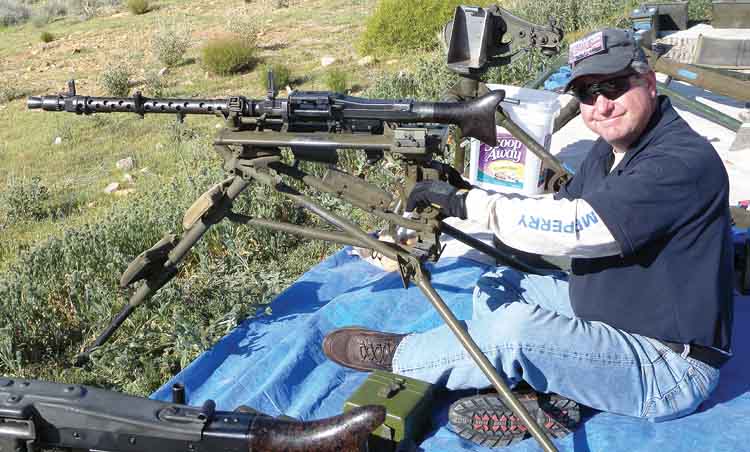
After Korea, returning home in June 1954, Bob went back to Aberdeen Proving Ground and got his old civilian gunner’s job back. Bob worked his way up to the top gunner’s job and in 1956 applied for a position as a test director primarily conducting tests on new 20mm aircraft automatic weapons and ammunition. From 1959 through 1963, Bob was involved in Engineering and Product Improvement tests, which were part of the M73 tank machine gun program. By 1960, was deeply involved in the .50 cal. T175 tank machine gun development program. Other gun programs Bob participated in included the 20mm M39 aircraft gun, the 20mm M61 Vulcan, the TRW 25mm Bushmaster Rapid Fire Weapon System, the 5.56mm Stoner 63 weapons systems, and the Rheinmetall HS 820 20mm Interim Rapid Fire Weapon System.

In 1970, the U.S. Army decided to move its Aircraft Armament Testing Mission from Aberdeen Proving ground in Maryland to Yuma Proving Grounds in Arizona. Bob volunteered to go with it and relocated in the summer of 1971. Bob continued his work at Yuma working on a number of projects where he advanced to G12 in the early 1980s and kept him busy until his retirement in December, 1985.
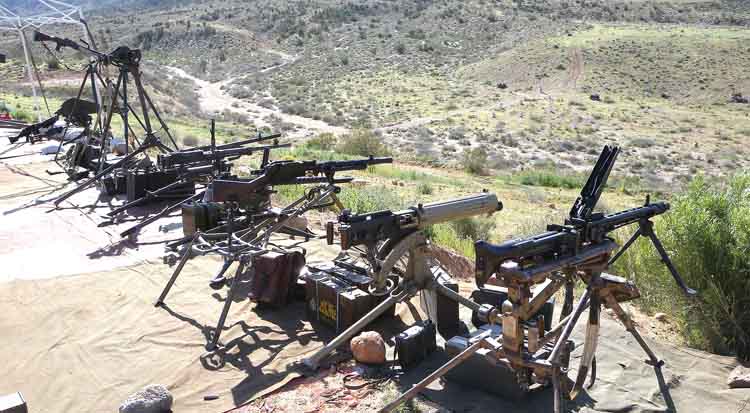
What better venue than the spring Big Sandy Shoot to honor and celebrate Bob Faris’ milestone birthday. Thanks. To Kenton Tucker and Ed Hope of MG Shooters, LLC, the operators of the Big Sandy Shoot, they came up with the idea of incorporating their shoot at Wikieup with honoring Bob, who is a regular at their shoots, and always brings a fine array of rare weaponry from his collection to shoot. To cap off the day, a large birthday cake was on hand at the BBQ dinner complete with candles, an image of Bob firing a Maxim and a salutation saying: “The Big Sandy Shoot wishes Bob Faris a 21 Gun Salute on his 80th Birthday. Congratulations.”
Many of the Who’s Who in the machine gun world attended this event just for the opportunity to sing Happy Birthday to Bob. Bob is a quiet and reserved gentleman and seemed a bit embarrassed at times at all the attention he was receiving, but he happily took it all in stride and allowed us to honor him.
The location of The Big Sandy Shoot is a perfect place for the long range machine gun shoot. Wikieup is located in a small unincorporated community on US Route 93 in the western part of Arizona. Just north of Wikieup is the home of the bi-annual Big Sandy Shoot put on by MG Shooters, LLC, billed as “The Largest Machine Gun Shoot in the U.S.”
Wikieup is the place to shoot whatever you may have, or may want to shoot or see. From suppressed pistols to artillery, antique to modern and just about everything imaginable in between, it can be found on the quarter-mile long firing line. The Big Sandy shoot typically has around 200 registered shooters on 103 ten-foot line positions, with some two million rounds being expended. The spring shoot used 1,300 pounds of Tannerite, 15 cases of “reactive” targets representing over 1,500 targets set up for the shooters to test their skill at varying ranges and, on the Saturday night shoot, new this year, included 16-inch fireworks mortars attached to some of the reactive targets. Additionally, due to the remote location, radio-controlled aerial targets are provided and present an exciting, different and difficult challenge to the shooters. Shooters, vendors and guests all get to experience the event up-close and enjoy the camaraderie of the event.
The night shoot is truly something to behold. Tracers, star shells, reactive targets, fireworks and RC airplanes with lights on their wings produce an awesome light show extravaganza that is second to none.
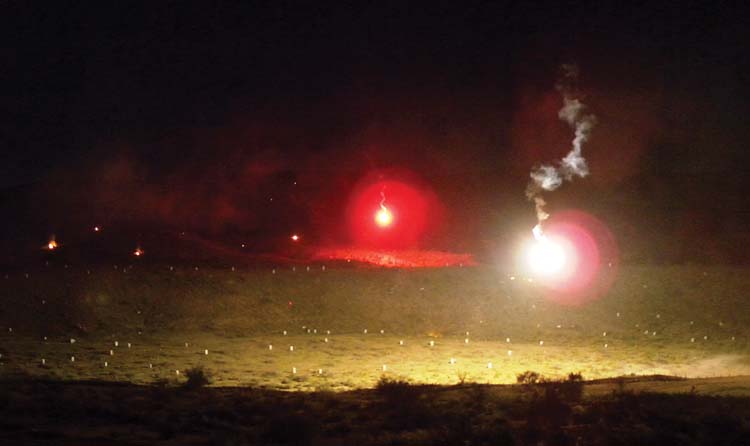
The Big Sandy not only hosts a large machine gun shoot but they have many specialty events held simultaneously that test the skills of shooters in specific categories. This year the M1 Garand event was won by Joe Brennan; the Assault/Battle Rifle event was won by Philip Nielson; the Shotgun event was won by Ed Fallon; the subgun/Thompson event was won by Del Maslen and the Military Bolt-Action event was won by Matt Brennan. The Top Gun for the events was Scott Cornelius.

In the spirit of civic mindedness and their place within the Wikieup community, they hold a raffle at the shoot. So far, over $10,000 has been donated to the local district.
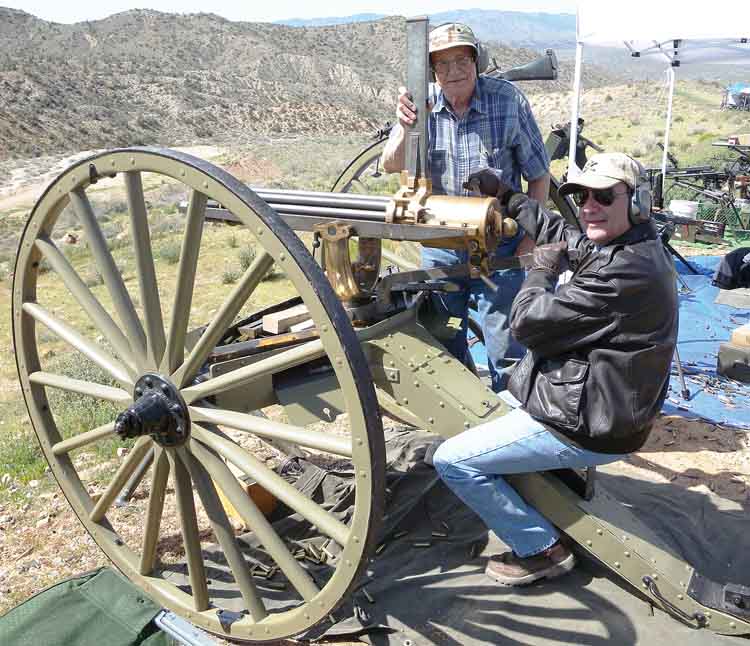
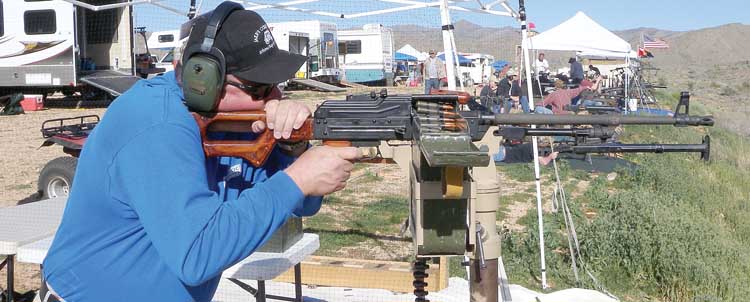
Under the watchful eyes of Ed Hope and Kenton Tucker, the Big Sandy Shoot in Wikieup is a safe and professionally managed range to see and shoot Class 3 and Destructive Device weapons out to 1,000 yards, particularly for those people living in the western half of the U.S. They have 30 people on staff for the MG shoots that includes 10 range safety personnel who also set the reactive targets as well as six firefighters. Breakfast, lunch and dinner can be had serviced by the local 4-H. Young Marines and active military in uniform are allowed in free. Improvements to the facility include a range tower, water well and they are constantly grading the roads up to the event. They are constantly trying to upgrade and improve the facilities. Their main objective is to provide a safe and comfortable shooting opportunity promoting machine gun history and ownership. Whether you are a shooter or spectator, Wikieup is the place to be.
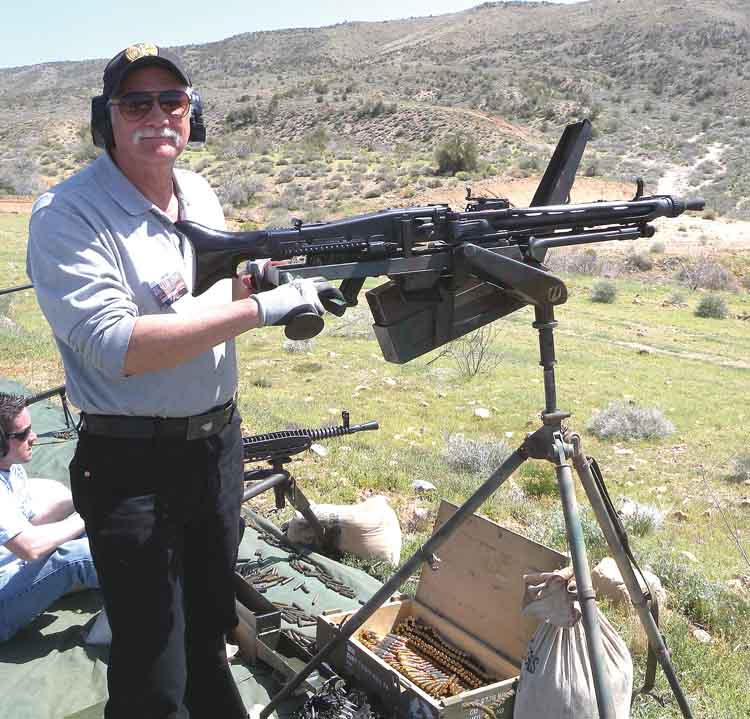
The autumn 2010 Big Sandy Shoot will be held on October 22-24. Call them or check their website to confirm dates and details.

MG Shooters, LLC
P.O. Box 5672
Scottsdale AZ 85261
(602) 327-7933
www.mgshooters.com
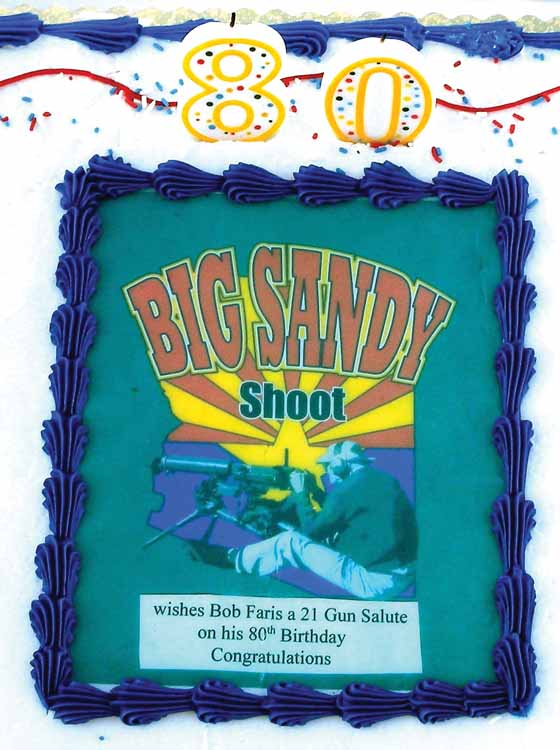
| This article first appeared in Small Arms Review V14N2 (November 2010) |











